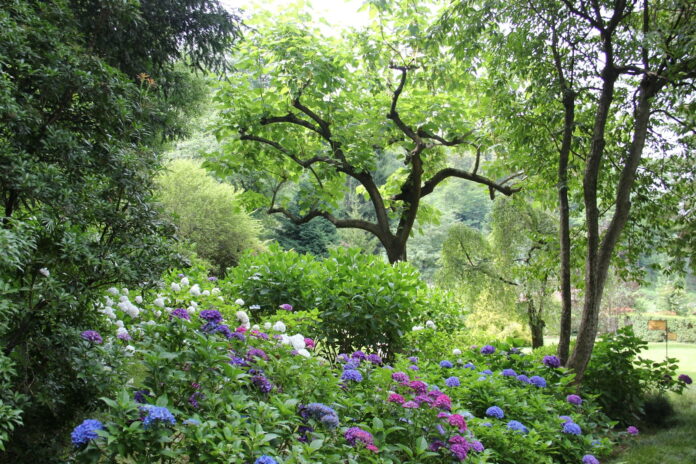Creating a wildlife-friendly garden is an enriching way to contribute to local biodiversity and support the health of the environment. Such gardens not only offer a haven for various species but also provide aesthetic and personal satisfaction to those who nurture them. Developing a space that accommodates nature’s intricate web requires understanding the current biodiversity of your garden, selecting the right plants, and adopting sustainable gardening practices.
Assessing Your Garden’s Biodiversity
Assessing the current state of biodiversity in your garden is the first step in enhancing habitat diversity. Start by observing the types of wildlife that visit or reside in your space, including birds, insects, mammals, and other creatures. Note their habits, the places they frequent, and the conditions under which they thrive. Moreover, consider conducting a survey of the plant species present, as they form the foundation of the food chain and offer critical resources such as shelter, food, and nesting materials. This assessment will provide a baseline understanding of the existing ecosystem and highlight areas that require improvement or diversification.
To further analyze your garden’s biodiversity, it’s beneficial to research the native species in your region and their specific habitat needs. Understanding which species are native and which are invasive can guide you in making informed decisions about which plants and animals to encourage or control. Additionally, consider mapping out your garden into different zones, paying attention to varying conditions such as sunlight, moisture, and soil type. Each zone will have specific requirements and potential to attract different types of wildlife. This zonal approach helps in planning interventions tailored to enhance habitat diversity effectively.
Lastly, recognizing the seasonal patterns in your garden’s ecosystem is vital. Different species may visit or become more active during certain times of the year, and your garden should be prepared to support them throughout these periods. This long-term perspective ensures that the garden remains a supportive environment for a wide range of species year-round, contributing to the overall resilience and richness of local biodiversity.
Selecting Plants for Wildlife Benefits
When selecting plants for your garden, aim for a diverse mix that provides various benefits to wildlife. Native plants are particularly valuable as they have evolved alongside local wildlife and are well-suited to meet their needs. These plants tend to require less maintenance, are more resistant to local pests and diseases, and offer the right kind of nourishment for native species. Include a variety of flowering plants that bloom at different times to ensure a continuous supply of nectar for pollinators. Additionally, incorporate plants that produce berries, seeds, and nuts, which serve as food sources for birds and small mammals.
Layering vegetation is another effective technique to enhance habitat diversity. Create vertical layers ranging from ground cover and shrubbery to canopy trees. This not only maximizes the use of space but also mimics natural habitats, offering a variety of shelter and breeding sites for different species. Alongside this, consider adding plants with different textures, colors, and shapes to attract a broad range of insects and birds. Diversity in plant characteristics increases the chances of supporting a wider spectrum of wildlife.
When planning the plant layout, be mindful of creating corridors and connections to other green spaces. Wildlife-friendly gardens should not be isolated; they need to integrate into a larger network that allows species to move and disperse. Ensuring that your garden contributes to ecological connectivity can significantly improve local biodiversity and provide vital links for wildlife, especially in urban areas where natural habitats are fragmented.
Implementing Sustainable Gardening Practices
Sustainable gardening practices are crucial for developing a wildlife-friendly garden. These practices not only support biodiversity but also promote ecological balance and reduce the garden’s environmental impact. One such practice is the use of organic methods for pest control, which avoids harming non-target species and maintains a healthy population of beneficial insects. Composting and mulching are also important sustainable practices, as they enrich the soil naturally, reduce waste, and help retain moisture, providing a healthy foundation for both plants and the microorganisms that support them.
Water conservation is another key aspect of sustainable gardening. Installing rain barrels, using drip irrigation systems, and selecting drought-resistant plants are effective ways to minimize water usage. Additionally, creating features like ponds or water baths can provide essential sources of water for wildlife, while also attracting species such as amphibians and birds. It’s important to avoid the use of chemicals and pollutants in these water features to ensure they remain safe havens for visitors.
Lastly, reducing the use of lawns and non-native plants can significantly enhance the ecological value of your garden. Lawns are often biodiversity deserts, providing little in the way of habitat or food for wildlife. Replacing them with native ground covers or wildflower meadows can turn these areas into productive ecosystems. Embracing a more natural aesthetic, tolerating a little disorder, and leaving areas undisturbed can create microhabitats that are beneficial for insects, small mammals, and other creatures, contributing to a more diverse and resilient garden ecosystem.
Enhancing habitat diversity within a garden is a multifaceted endeavor that involves assessing existing biodiversity, selecting the right plants, and implementing sustainable practices. By understanding the needs of local wildlife, creating layered and varied plantings, and fostering ecological connections, gardeners can transform their spaces into rich, supportive environments for a variety of species. The integration of sustainable techniques further ensures that these wildlife-friendly gardens contribute positively to the broader landscape, offering a model of harmony between human activity and the natural world. As each garden flourishes into a unique ecosystem, it joins the collective effort in preserving our planet’s biodiversity.
